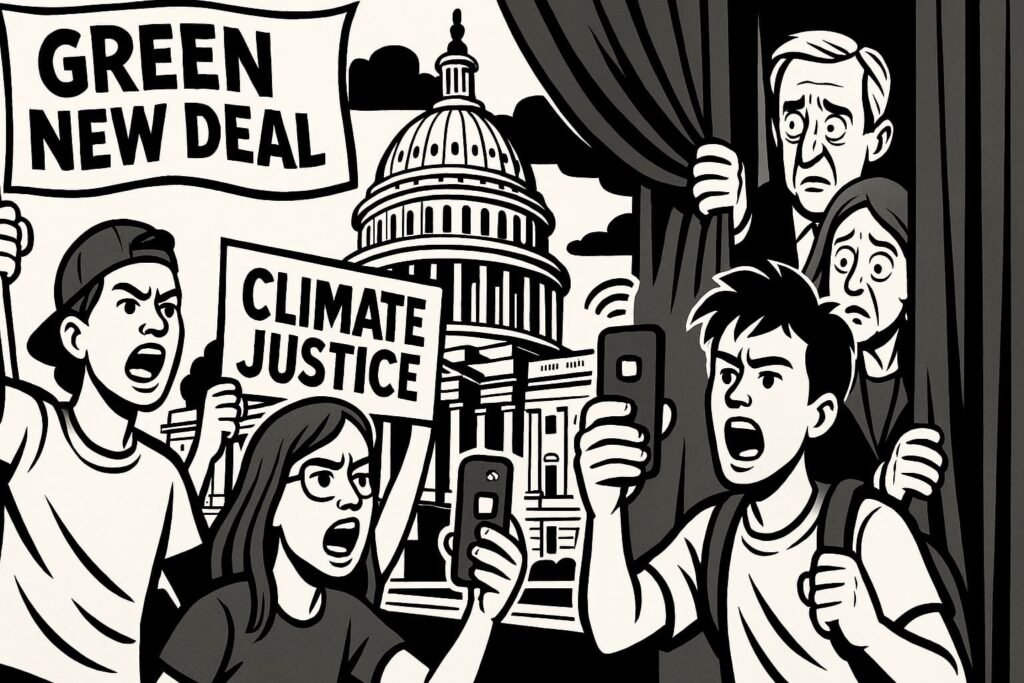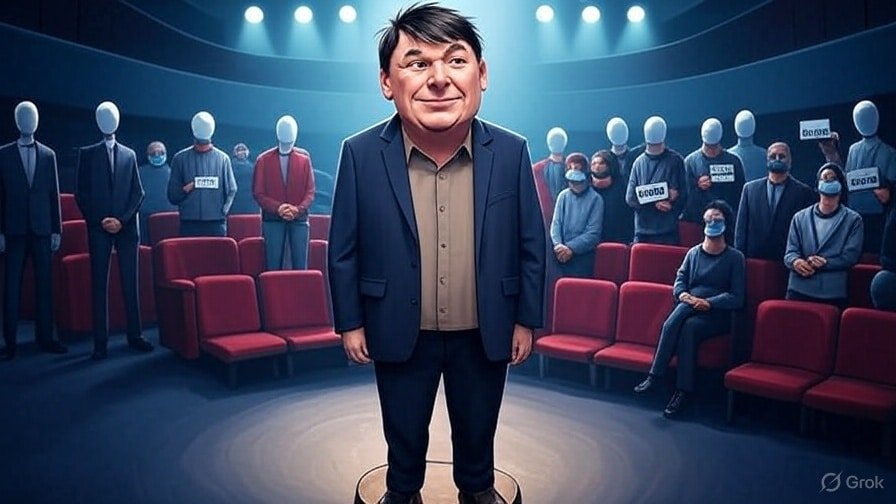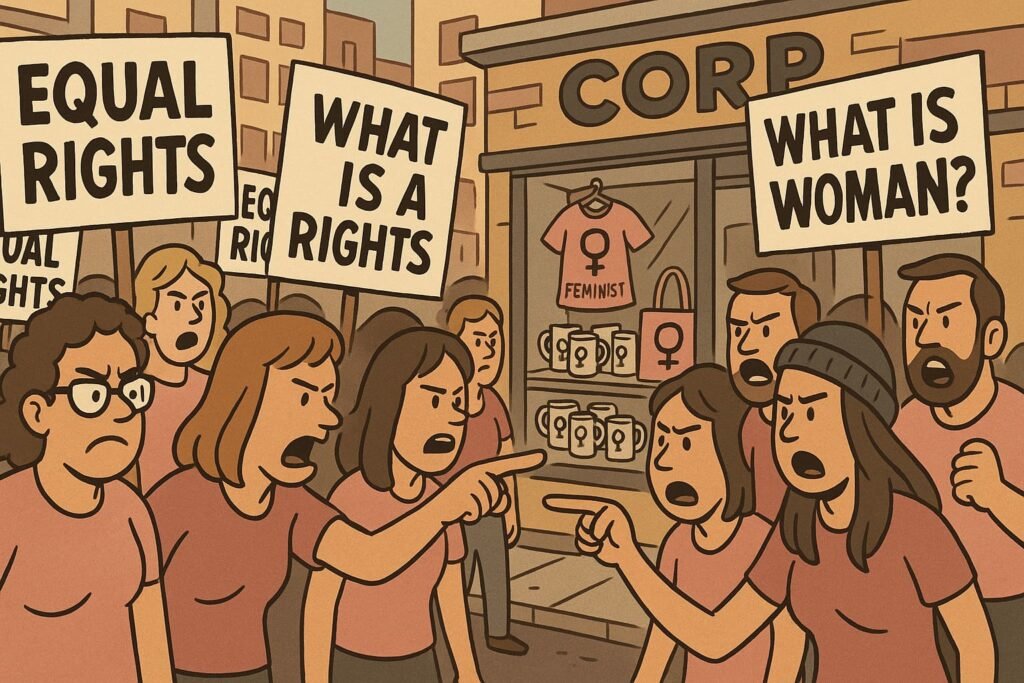Sunrise Movement Explained – Climate Youth Activism
From Student Sit-ins to Green New Deal Lobbyists
The Sunrise Movement looks like fresh, youthful energy: kids with posters, school strikes, urgent speeches about the planet. But beneath the optimism lies a professional activist machine. Sunrise isn’t just about climate — it’s about reshaping politics around identity, equity, and a permanent culture of protest.
Table of contents
What Is the Sunrise Movement?
Founded in 2017, Sunrise bills itself as a youth-led movement to stop climate change and create millions of “good jobs.” Its biggest moment came with the Green New Deal — a sweeping wish list that tied climate action to universal healthcare, guaranteed housing, and “equity for all.”
It’s not just climate policy. It’s social revolution packaged as climate urgency.
Buzzwords of Sunrise
- Climate Justice → climate change framed as systemic oppression.
- Intersectionality → climate action tied to race, gender, and class politics.
- Good Jobs for All → a rebranded wealth redistribution agenda.
- Green New Deal → the flagship demand: decarbonise while rebuilding society.
How It Shows Up in Practice
- Politics → Sunrise stages sit-ins at Congress, pressures Democrats, and campaigns against moderates who won’t back the Green New Deal.
- Schools & Youth → high-schoolers recruited into “climate strikes” and media-friendly walkouts.
- Media → glowing coverage portraying Sunrise as the voice of a generation.
- Alliances → works with BLM, unions, and social justice NGOs to frame climate as part of a broader equity fight.
The Money and the Machine
Though grassroots in image, Sunrise is backed by foundations, NGOs, and donors. Professional organisers train recruits, run lobbying campaigns, and target elections. The youth optics mask a polished, well-funded network.
The Consequences
Sunrise makes climate urgency impossible to ignore — but at a cost:
- Polarisation → climate framed as left vs right, rather than shared survival.
- Unrealistic Demands → net-zero in 10 years, full social revolution.
- Distraction → tying climate to every identity cause weakens broad support.
- Permanent Crisis → the rhetoric ensures the movement never declares victory.
Why It Matters
Sunrise shows how modern activism works: brand young, speak radical, partner with NGOs, and move culture through slogans and spectacle.
Climate change is real. But Sunrise’s approach risks turning it into just another theatre of woke politics — loud, polarising, and endlessly profitable for the activist industry.
From Climate to Culture
The Sunrise Movement began as youth climate activism. Today, it’s a political franchise tying environmentalism to identity and ideology. Less about fixing emissions, more about reshaping society.
👉 Want the bigger picture? Explore our full Activism Explainer Hub to see how movements, tactics, and ideologies shape modern politics.
FAQ
What is the Sunrise Movement?
A youth activist group founded in 2017, best known for pushing the Green New Deal and organising climate strikes.
Is Sunrise really grassroots?
No. While youth-led in appearance, it is heavily supported by NGOs, donors, and political operatives.
Why is Sunrise controversial?
It ties climate action to identity politics and socialist economics, making bipartisan cooperation harder.
What is the Green New Deal?
Sunrise’s flagship demand: a sweeping plan for decarbonisation, wealth redistribution, and social justice.
Why does Sunrise matter?
It shows how climate urgency is used to advance broader ideological goals — turning protest into politics.



